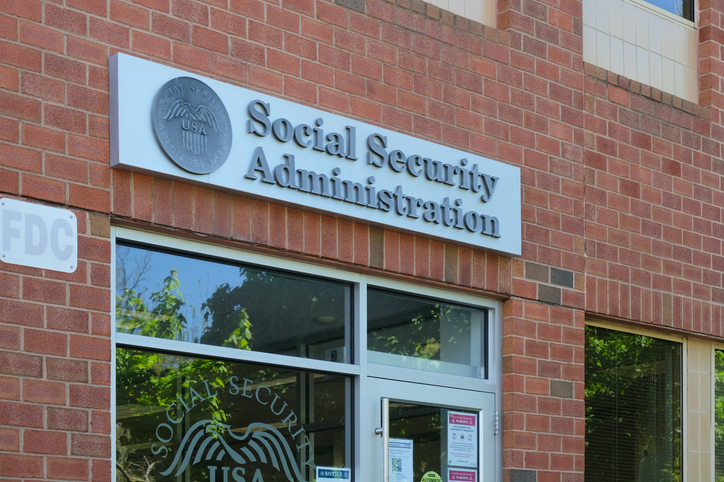Knowing what the average Social Security check is at age 64 can help you decide when to retire and create a plan for your income in retirement. Collecting Social Security at 64 does mean you’re claiming benefits before your full retirement age (FRA), which still means a permanent reduction to your monthly benefit. But if you waited to file that claim until you turned 64, it also means you’d be collecting more than if you claimed at 62 or 63.
A financial advisor can also help you explore different retirement income strategies and create a plan that aligns with your needs.
Claiming Social Security at 64
When you claim Social Security at 64, you’re doing so before full retirement age, which means your monthly benefit will be reduced for the rest of your life. However, the reduction is less severe than if you claimed at 62 or 63.
Here’s how the Social Security Administration reduces benefits1 based on when you claim:
- For the first 36 months you claim before FRA, your benefit is reduced by about 0.56% per month.
- For any months beyond that, the reduction is roughly 0.42% per month.
If your full retirement age is 67, starting benefits at 64 means you’re claiming 36 months early, resulting in a reduction of about 20%. In other words, you’d receive around 80% of your full benefit amount. This smaller cut may feel more manageable for those who need income sooner, but want to avoid the larger reductions tied to earlier claims.
To help you estimate your personal benefit, the Social Security Administration provides month-by-month reduction charts2 based on your birth year.
For a full breakdown of the percentage of full retirement benefits you’d receive if you claim Social Security at various points throughout age 64, you can check out the table below:
| Age | Percentage of Full Retirement Benefits Received |
| 64 | 80.0% |
| 64 and 1 month | 80.6% |
| 64 and 2 months | 81.1% |
| 64 and 3 months | 81.7% |
| 64 and 4 months | 82.2% |
| 64 and 5 months | 82.8% |
| 64 and 6 months | 83.3% |
| 64 and 7 months | 83.9% |
| 64 and 8 months | 84.4% |
| 64 and 9 months | 85.0% |
| 64 and 10 months | 85.6% |
| 64 and 11 months | 86.1% |
The Average Social Security Benefit at Age 64

While the SSA doesn’t publish a specific average for those aged 64 years old, we can estimate the average Social Security check at that age based on the average full retirement benefit.
According to the SSA’s most recent data, the 2025 Annual Statistical Supplement3, as of December 2024, the average monthly benefit for a retired worker who claimed benefits at 67 years old was $2,436.27, which assumes the individual claimed benefits exactly at full retirement age.
To estimate the 2025 figure, we can apply the 2025 cost-of-living adjustment (COLA) of 2.5%4 raises the estimate to approximately $2,497.18
So, if a retiree claims benefits at age 67, and had average lifetime earnings, they could expect around $2,497.18 per month in 2025. But if that same person claims at age 64, they would receive 20% less. If we apply that reduction to the $2,497.18 estimate, we get a monthly benefit of $1,997.74.
That trade-off — receiving benefits for more years, but at a lower amount — can have a major effect over time. However, the three years of benefits you’ll receive before reaching age 67 will total $71,918.64 before any COLA increases. It will take a number of years before the increased monthly benefit you would get from waiting to claim equals that amount. If you need the income to bridge the gap to full retirement age or don’t expect to live into your 80s or 90s, it might be a worthwhile decision.
Of course, the exact benefit you’ll receive depends on your earnings history, claiming age and cost-of-living adjustments.
Claiming Social Security at 64 – Key Considerations
Claiming at 64 provides a compromise between accessing Social Security early and minimizing the long-term reduction in your benefit. Still, the decision should be made with several considerations in mind.
The most obvious trade-off is the permanent reduction. As we discussed above, claiming at 64 typically means receiving around 80% of your full benefit. Over decades of retirement, that smaller monthly payment can add up to a sizable difference. However, if you’re leaving the workforce due to job loss or challenges with your health, the income may be necessary.
Another key factor is health insurance. Medicare eligibility begins at 65, so if you retire at 64, you’ll need to plan for one year of premiums for other coverage before Medicare kicks in. This gap can often be filled using Affardable Care Act (ACA) marketplace plans, COBRA coverage or a spouse’s employer plan. Still, it’s essential to account for the cost of coverage during this one-year period.
Other considerations include the impact on spousal and survivor benefits and whether you plan to keep working. If you earn more than the SSA’s annual limit while collecting early benefits, your payments may be temporarily reduced.
Frequently Asked Questions (FAQs)
How Much Will I Lose By Claiming Social Security at 64?
If your full retirement age is 67, claiming at 64 typically results in about a 20% reduction to your monthly benefit. That reduction is permanent and will affect spousal and survivor benefits, as well.
What Happens if I Work While Claiming Social Security at 64?
If you earn more than the annual earnings limit ($23,400 for 2025), your benefit may be temporarily reduced. The SSA will withhold $1 for every $2 you earn above the limit. Once you reach full retirement age, this earnings test no longer applies.
Will My Benefit Increase if I Delay Claiming Past 64?
Yes. For each month you delay, your benefit amount increases until you reach your full retirement age. If you wait even longer, up to age 70, you can earn delayed retirement credits that further increase your monthly payment.
Bottom Line
Knowing what the average Social Security check is at age 64 can help you make a plan for your retirement, as well as decide when it makes the most sense to formally retire and claim benefits. Claiming Social Security at 64 may offer a comfortable balance between accessing income early and minimizing benefit reductions. You’ll still face a permanent decrease in your monthly payment, but the cut is smaller than it would be at 62 or 63. Whether this makes sense for you depends on your retirement timeline, health, income needs and lifestyle goals.
Retirement Planning Tips
- A financial advisor can help evaluate your retirement plan to determine whether you have enough saved and recommend strategies to grow your nest egg. Finding a financial advisor doesn’t have to be hard. SmartAsset’s free tool matches you with vetted financial advisors who serve your area, and you can have a free introductory call with your advisor matches to decide which one you feel is right for you. If you’re ready to find an advisor who can help you achieve your financial goals, get started now.
- Mandatory distributions from a tax-deferred retirement account can complicate your post-retirement tax planning. Use SmartAsset’s RMD calculator to see how much your required minimum distributions will be.
Photo credit: ©iStock.com/kate_sept2004, ©iStock.com/Veronique D, ©iStock.com/Jacob Wackerhausen
Read the full article here
